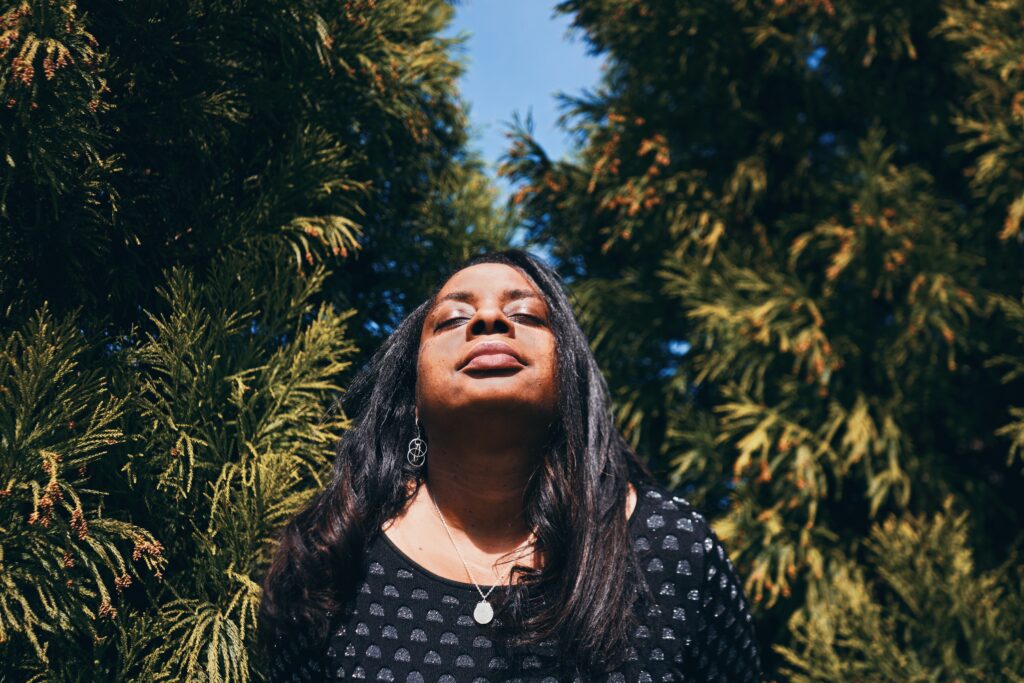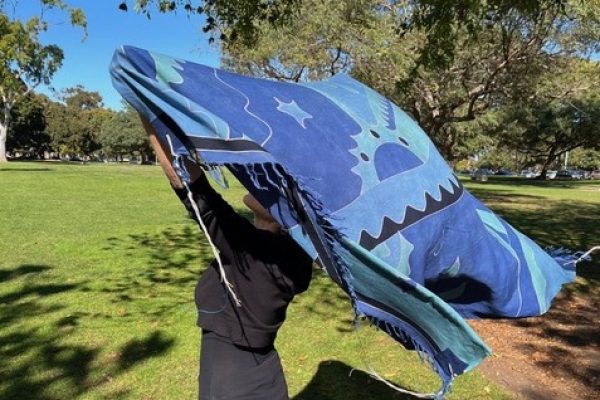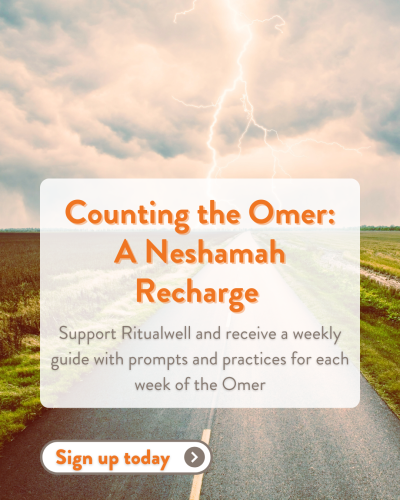“Mezuzah,” literally meaning “doorpost,” is a literal marker of Jewish homes. Following the commandment that appears in Deuteronomy 6:4–9 and 11:13–21, the mezuzah contains the words of the Shema, the prayer that is the central affirmation of Jewish belief and identity.
In its most literal sense, Shema means “hear” or “listen.” An essential element of the Shema is that we must hear our voices in our own ears—that is, while we do not need to shout out the words, neither can we say the words to ourselves in silence: we must speak them aloud.
In its deepest sense, the Shema is not only a statement. It is a practice of unification – with Judaism throughout and across time and space, with the Divine, with our ancestors, with our families and communities, with ourselves and our personal Jewish history.
Part 1: Engaging in a Body Scan to create a Mezuzah Case
You may complete this body scan in your imagination if it is not possible to physically perform the actions.
Use your right hand to gently trace the outline of your body from your left side, running your hand gently up your arm and neck and across the top of your head. At the midpoint of the top of your head, switch hands and continue with your left hand across your head, down your neck and down the opposite side of your body.
As you sketch the outline of your body, hold in your mind’s eye the image of your body as a doorway, a portal of holiness that walks through the world. Notice your breath, the textures of your skin, hair and clothing.
If you are wearing a tallit, wrap your tallit around you, holding your arms with the opposite hands.
If you are not wearing a tallit, hold your arms with your opposite hands, as if giving yourself a gentle hug. Consider your body as the mezuzah case, holding your soul within it.
Part 2: Writing the Klaf and Placing it in Your Soul
Imagine your soul as the rolled klaf (parchment). Consider what is inscribed on your soul: the inner side of the klaf holds the words of the Shema.
On the reverse side of the parchment are three letters: shin (ש), dalet (ד), yud (י). They form an acronym for the phrase שׁוֹמֵר דְּלָתוֹת יִשְׂרָאֵל, “Guardian of the doors of Israel.”
Pause to visualize these words and how they connect to your relationship to your soul.
Part 3: Placing the Shin on the Mezuzah Case
The letter shin (ש), holding the numerical value of 300 – a representation of Divine power – often appears on the mezuzah case as a reminder.
In order to foster focus and minimize distractions, many follow the practice of closing the eyes and/or covering the eyes while reciting the Shema. This practice can be elevated through creating an embodied shin to place on the mezuzah case of your body.
Using your dominant hand, place your pinky finger on one closed eyelid and your thumb on the other closed eyelid. Place your remaining three fingers as a single unit in the middle of your forehead, in the location of the “third eye,” the mystical invisible eye that provides perception beyond physical sight. This is the place of דַּעַת da’at, deep, intimate knowing, kabalistically, where all of the ten sefirot unite as one.
Part 4: Recitation of the Shema
Notice the gentle pressure of the shin that you have made with your finger and thumb on your eyelids and your fingers on your forehead. Allow your mystical eye of perception to open. See the connections you carry within yourself. Breathe deeply, inhaling and exhaling in awareness of your preparation for unification.
When you are ready, chant the words of the Shema.
————-
The inspiration from this ritual stems from the prayer practice of Indian Jewish communities as taught by Rahel Musleah, who brings forward the traditions of the Baghdadi Jewish community of Kolkata and Joshua Shapurkar, a member of the Bene Israel community of Mumbai.












